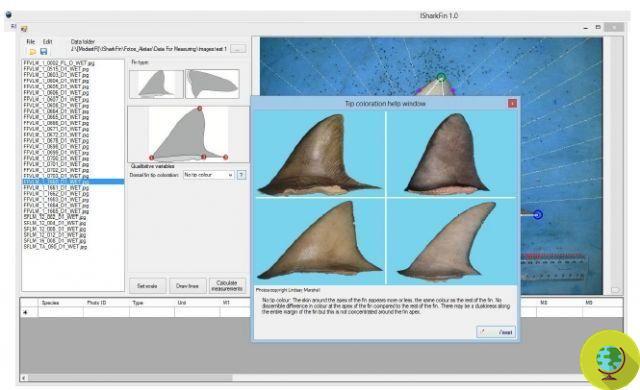New FAO software helps save sharks. New digital tool enables rapid identification of these species, helping to tackle illegal shark fin trade and protect endangered shark species and combat illegal shark fin trade
He is about to end up run over, his mother saves him
New FAO software helps save the sharks. The new digital tool enables rapid identification of these species, helping to tackle the illegal trade in shark fins and to protect endangered shark species and to combat illegal shark fin trade.
Is called iSharkFin and is designed for customs officers, inspectors of fish markets but also for fishermen who want to avoid the capture of protected species. Work began in 2013 after five shark species were added to the Convention on International Trade in Endangered Species of Wild Fauna and Flora (CITES).
The system is based on artificial intelligence techniques and provides a useful tool to port inspectors, customs agents, market inspectors and those who trade fish, all people who do not have specific training in the recognition and scientific classification of species.

HOW DOES IT WORK - A photograph is uploaded, the user chooses some key points of the fin shape and other details, an algorithm compares the information with its database and identifies the shark species in question. The process takes about five minutes. FAO is also developing an iSharkFin application that can be used su tablets o smartphone, thus expanding its scope and use.
Hitherto iSharkFin can identify 35 species of dorsal-finned sharks - the fin of the shark par excellence - and seven pectoral-finned sharks alone. Many of these species are the most frequently traded internationally. More will be added, but as some species are becoming quite rare, it will take time to collect full data.
PINNE DI SUQALO - The introduction of iSharkFin could allow authorities to unravel the mystery of the true extent of shark fishing worldwide. Estimates on the number of sharks killed they vary enormously. According to a recent study, the figure could be over 73 million units, or more than 6 percent of the total annual stock.
An amount that exceeds the rate deemed sustainable for animals, such as sharks, characterized by slow growth, reaching maturity late and having limited reproduction. These figures are four times higher than that recorded by the FAO, based on official production statistics.
The cause of this incomprehensibly large gap is often attributed to “spinnamento” (finning in English, ndt), a cruel practice of fishing for sharks, cutting off their fins (intended for trade) and throwing the dying animal back into the water. Many nations have declared "finning" illegal and have ruled that the shark fins they can only be marketed if the whole carcass is brought ashore.
"Using iSharkFin should also allow for a better understanding of the data gap, as information on the fins photographed can be used to extrapolate the assumed volume and weight of the entire animal, leading," explains Dr Monica Barone, who led a team. of FAO's Fisheries and Aquaculture Department in software development - to an indirect calculation of the catching sharks ".
Roberta Ragni
Read also:
Shark Finning: the massacre of sharks
Top 10 rare sharks facing extinction


























